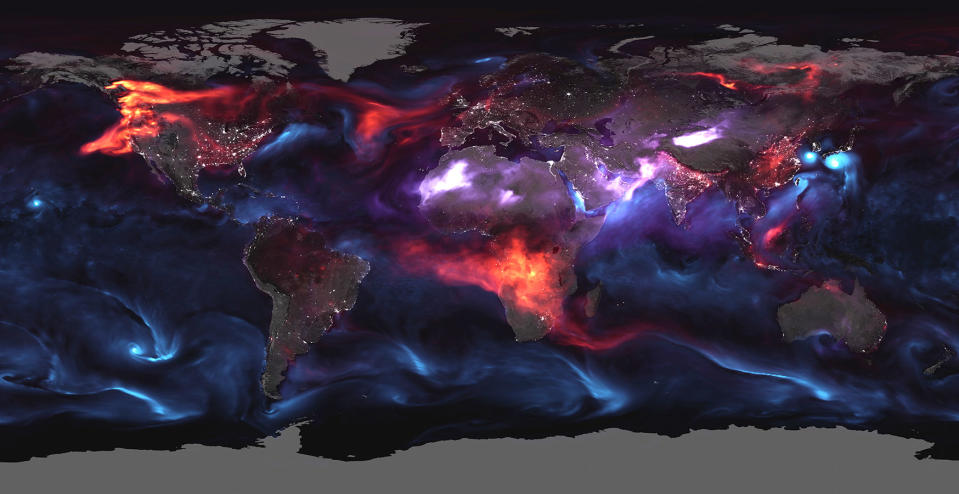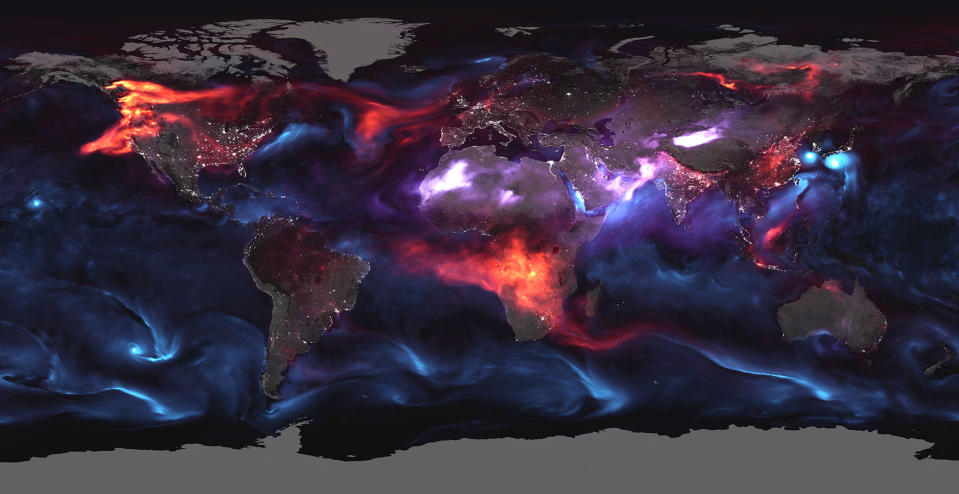NASA's terrifying visualization of atmospheric aerosols
Heatwaves, hurricanes and other extreme weather might be the "face of climate change," but it's not the only sign. A grim new visualization from NASA shows another problem caused indirectly by global warming: airborne particles and droplets. These "aerosols," shown on a single day on August 23rd, come from dust, volcanic ash and other sources. They're particularly brutal this year because of fires in California, British Columbia and the southern part of Africa.
NASA notes that the aerosols shown are "not a direct representation of satellite data." To create the map, scientists married data from the Goddard Earth Observing System Forward Processing (GEOS FP) model with other satellite data and images. Black carbon particles are shown in red, sea spray salt aerosol lofted by storms are blue, while dust is shown in purple.
Researchers integrated "fire radiative power" data from the Moderate Resolution Imaging Spectroradiometer sensors onboard the Aqua and Terra satellites. They also superimposed night light data from the Visible Infrared Imaging Radiometer Suite (VIIRS) on the Suomi NPP satellite showing towns and cities. The colors and lights mix to form a swirl-like image that's at once dazzling and alarming.
The sun rise took place in Prince George an hour ago and it is still pitch black because of the smoke. #BCWildfire pic.twitter.com/uz76rfKroR
— Richard Zussman (@richardzussman) August 17, 2018
NASA notes that "some of the events that appear in the visualization were causing pretty serious problems on the ground." Namely, tropical cyclones Soulik and Cimaron were about to hit South Korea and Japan, while Hawaii braced for floods and rains caused by Hurricane Lane (that eventually petered out into a tropical storm, thankfully). The smoke came largely from California and Canada's British Columbia. At the peak of the BC fires, the air quality index in Prince George was literally off the charts, and it looked like nighttime when it was actually morning (above).
Scientists say that hurricanes, cyclones, extreme heat and wildfires are all exacerbated by global warming. So far this year, 118 all-time heat records have fallen across the globe, and forest fires have devastated not just North America but Greece and other regions. All of that creates a self-perpetuating cycle, as warmer Arctic temperatures release CO2 from permafrost, glaciers and lakes, while aerosols from forest fires enhance the greenhouse effect, boosting temperatures.


